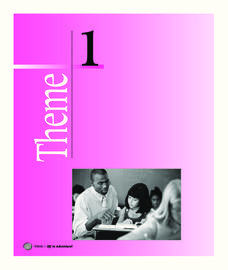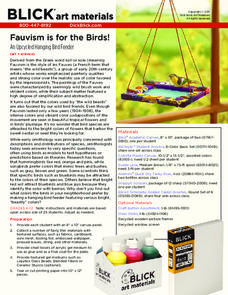Novelinks
The Devil’s Arithmetic: Semantic Feature Analysis
Organize the characters in Jane Yolen's The Devil's Arithmetic according to their shared character traits. After listing character traits as a class, kids note which characters exhibit particular characteristics with a discussion and...
Curated OER
Running Out of Time: Letter to a Character
Once your learners have a firm handle on the characters in Running Out of Time, invite them to write letters to chosen characters about the events of the novel. Pupils then share with others who wrote to the same character.
Houghton Mifflin Harcourt
Off to Adventure!: Challenge Activities (Theme 1)
Off to Adventure! is the theme of an English language arts unit comprised of a variety of challenge activities. Scholars enhance skills and reinforce concepts by taking part in a grand book discussion, giving an oral report, and writing...
Concordia College Archives
Our School Song
Show your school spirit! Class members use instruments or sing along and employ what they have learned in the two previous lessons to perform their school's songs.
Curated OER
Harry Potter And The Prisoner of Azkaban Magic Square!
Readers of Harry Potter and the Prisoner of Azkaban, the third in J. K. Rowling's series about the young wizard, complete a magic square using words drawn from chapters six and seven of the novel.
Curated OER
In the Billions and Linear Modeling
Your learners analyze population data to discern if it best fits a linear scenario. The idea of change by equal differences over equal intervals is enforced in this real-life task.
Curated OER
Symmetries of a Quadrilateral II
Learners investigate the symmetries of a convex quadrilateral in a collaborative activity. Rigid motion and complements are explored as learners analyze different cases of reflections across a line.
Curated OER
My Antonia: Body Biography Book Report
Examine the characters in Willa Cather's My Antonia with a group project. Small groups illustrate their chosen character on a large piece of paper and choose quotes from the text that tell about the character. Where learners choose to...
Dick Blick Art Materials
Fauvism is for the Birds!
Here's a art project that lets kids use bold colors to express their inner wild beasts, and maybe even attract a few wild birds. Using old picture frames, canvases, and screen mesh, young fauvists craft bird feeders and decorate their...
Maryland Department of Education
The Concept of Identity Lesson 5: Motivation - Maslow's Hierarchy of Needs
Maslow's Hierarchy of Needs provides the lens class members use to analyze and evaluate the motivations of the characters in Sylvia Plath's "Initiation" and scenes from Mean Girls. Readers then select a character from A Separate...
Maryland Department of Education
The Concept of Identity Lesson 4: The Psychological Approach
Readers apply Sigmund Freud's theories of the unconscious mind and the psychological approach to literary criticism to analyze and evaluate the relationship between two characters in A Separate Peace.
NOAA
Tides
Low tides, high tides, spring tides, neap tides, diurnal tides, semidiurnal tides, mixed tides ... just how many types of tides are there? The 10th installment of a 23-part NOAA Enrichment in Marine sciences and Oceanography (NEMO)...
Honors College at Scholar Commons
From Start to Strike: A Lesson Plan for the Whole Theatre Experience
Introduce young thespians to all aspects of the theater. A syllabus for a one-semester drama course provides lessons that take learners from the history of drama to the many facets of play production.
Prestwick House
The Grapes of Wrath
At over 450 pages, John Steinbeck's Pulitzer Prize winning novel The Grapes of Wrath can be a challenging choice for full-class, book circle, or independent reading. The activities in a 10-page sample The Grapes of Wrath activity pack...
Curated OER
Philanthropy, You, And Your World Lesson 1: Characterizing Philanthropic People
Young scholars determine the meaning of philanthropy and list attributes of philanthropic people. They examine philanthropic acts of themselves and others using a song and Post-It note activity.
Curated OER
Mitty Test and Theme
Young scholars read stories and determine the stock characterization, static/dynamic characterization and direct/indirect characterization. They read the story of "Mitty Test, "answer questions regarding the story, and discuss the...
Curated OER
Chaucer
Young scholars discuss characterization in "The Canterbury Tales". They examine professions that could be held by a travelers. They write a script for a new person on the trip. They may also write a poetic version for the script.
Curated OER
You Kiss the Book: Shakespeare's Romeo and Juliet
Students analyze imagery in Shakespeare's, Romeo and Juliet, and act out the passage to see how the author includes stage directions with his poetry.
Curated OER
Do You See What I See?
Young scholars identify the characteristics of different painting styles in this lesson. They examine the essential elements that characterize the different styles, and further research one chosen style of artwork. They then create an...
Curated OER
Bush Re-Election Campaign Revisited
Students examine the direct role played by George W. Bush in the 2004 election campaign. They compare these campaign conditions and tactics with those in the 1992 presidential election, and present information in the form of a Powerpoint...
Curated OER
Lesson Plan on Korea
Students participate in a lesson about ancient pottery making in Korea. The time of the research goes back to the 12th century. They read a story and study the attributes of characterization that the author uses.
Curated OER
Wuthering Heights: Questioning Strategy
Readers of Wuthering Heights use the DRTA strategy to formulate predictions about the actions of characters in Bronte's novel.
Curated OER
The Mystery Cafe
Students plan and perform a mysterious scenario using a variety of literary conventions such as characterization, setting, and plot development. Each group provides enough clues to make solving the mystery a challenge.
Curated OER
A Guilty Gertrude: Performing Speaking and Silent Moments in Hamlet
Students examine Gertrude's (in Hamlet) behavior, lines and thoughts for what it reveals about Ophelia's madness. They synthesize what they know about Gertrude to perform her character in a scene. They write stage directions and discuss...

























